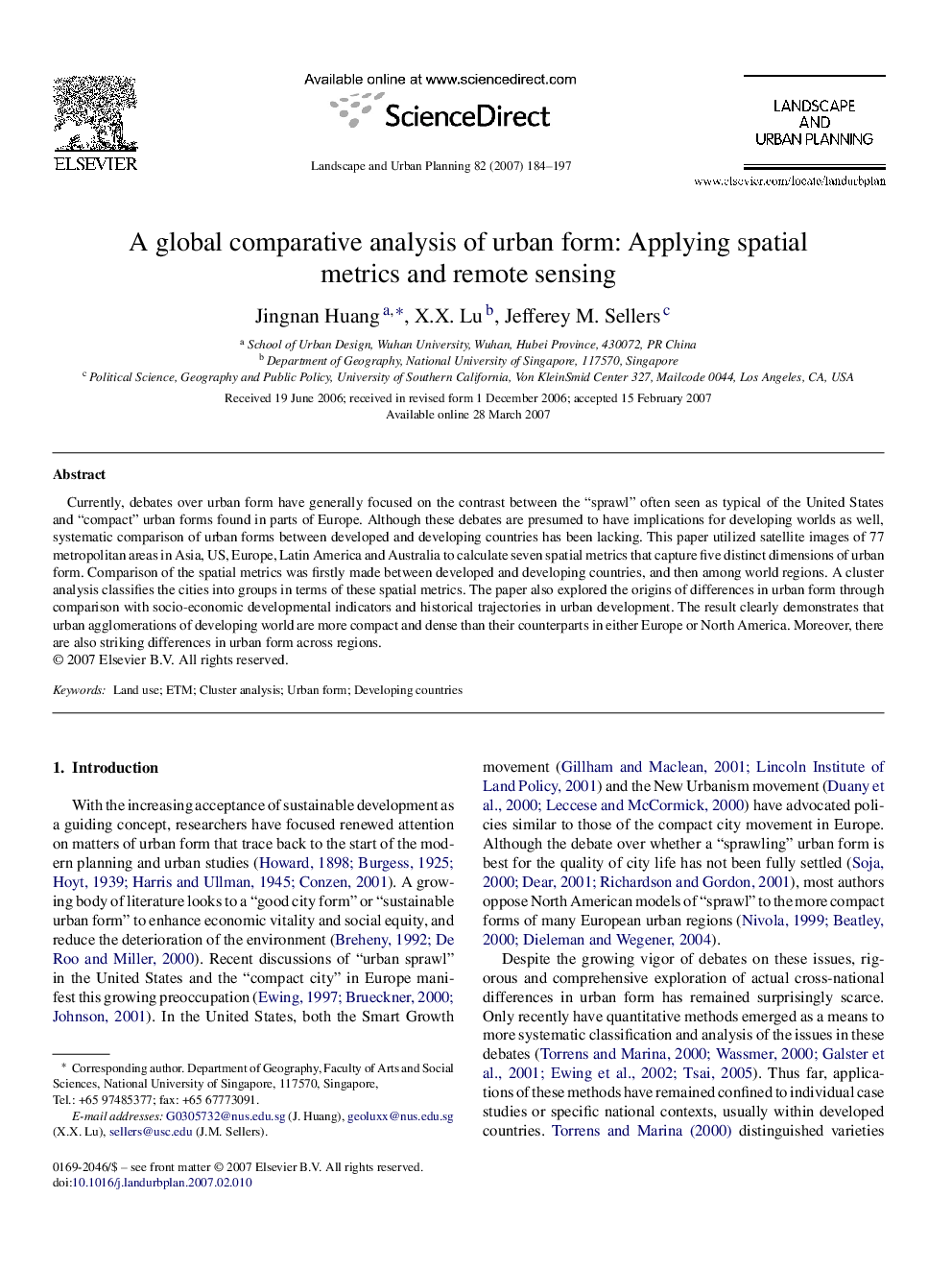| Article ID | Journal | Published Year | Pages | File Type |
|---|---|---|---|---|
| 1050598 | Landscape and Urban Planning | 2007 | 14 Pages |
Currently, debates over urban form have generally focused on the contrast between the “sprawl” often seen as typical of the United States and “compact” urban forms found in parts of Europe. Although these debates are presumed to have implications for developing worlds as well, systematic comparison of urban forms between developed and developing countries has been lacking. This paper utilized satellite images of 77 metropolitan areas in Asia, US, Europe, Latin America and Australia to calculate seven spatial metrics that capture five distinct dimensions of urban form. Comparison of the spatial metrics was firstly made between developed and developing countries, and then among world regions. A cluster analysis classifies the cities into groups in terms of these spatial metrics. The paper also explored the origins of differences in urban form through comparison with socio-economic developmental indicators and historical trajectories in urban development. The result clearly demonstrates that urban agglomerations of developing world are more compact and dense than their counterparts in either Europe or North America. Moreover, there are also striking differences in urban form across regions.
